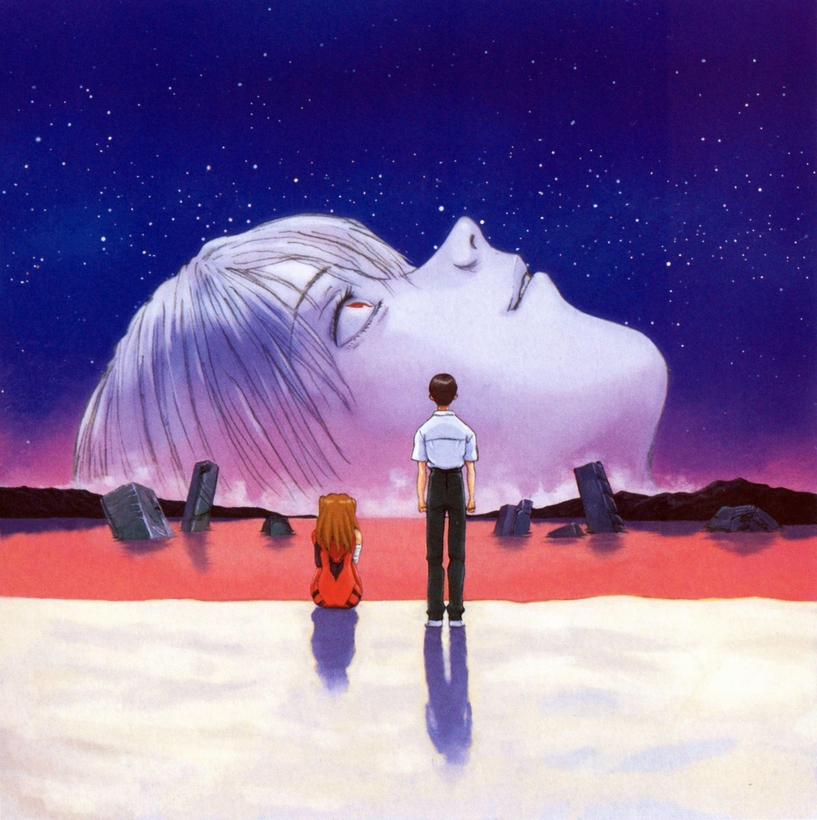“The development of Evangelion gives me the feeling of a ‘Live’ concert,” said the Japanese auteur Hideaki Anno in 1996. “Whatever the story or the development of the characters, I made them without a plan.” In fact, he says, “at first I had intended to make a simple work featuring robots.” Anything but “simple,” Anno’s futuristic anime series Neon Genesis Evangelion, which debuted in October 1995 and ran for 26 episodes, until March 1996, has achieved a fine-wine shelf life, inspiring an evergreen cult obsession of the sort usually associated with the films of, say, Stanley Kubrick or David Lynch.
“Animation is an entirely made-up fictional world,” said Anno in 2021. “This also means that it’s the best medium to put imagination to picture.”

According to the film director Wes Anderson, Anno’s show is “a Japanese cartoon that is very difficult to describe and might not sound that great if I tried anyway.... We watched them all in less than a week because you start to want to believe it’s real. This could spawn something like Scientology.”
Here’s my attempt to describe Neon Genesis Evangelion. The show opens in the city of Tokyo-3 circa 2015, after a global disaster known as the “Second Impact.” Alien monsters called “Angels” are threatening the planet’s survival, and humanity’s only hope is a 14-year-old named Shinji Ikari. Though cripplingly conflicted, he will pilot one of the Evangelion combat bio-machines developed by the paramilitary force “Nerv” (headed by his long-estranged father).

Anno’s exciting, oddly relatable dystopian tale of “mecha”—a subgenre of anime and manga centered around giant battling robots—was an immediate hit in Japan. The abundance of beautiful and compelling female characters didn’t hurt. “Animation is, on certain points, very close to the pornography industry,” Anno has said. “You can watch different animations and find anything you desire.”
Back in the early 1990s, after a professional failure, Anno suffered a four-year depression. Conceiving Neon Genesis Evangelion, he knew he wanted to explore such themes. When a friend lent Anno a book on mental illness—at around Episode 16—his fascination with psychology began to affect the direction of the show. By the time the controversial final two episodes were in production, Anno’s instinctual “live concert” approach had kicked into full gear: he threw out his scripts and developed deeply abstract, psychologically rich texts using experimental animation techniques. As summarized in a top review on Letterboxd by the contributor afragmentedgaze, “Shit went from boob jokes to existential terror really quickly.”

Those left disappointed and scratching their heads by the series’ coda, which defiantly lacked fan service, were left even more confused by Anno’s 1997 apocalyptic masterpiece, The End of Evangelion, a theatrical release made up of an even more uncompromising revision of Episodes 25 and 26. Anderson, however, listed it as his third-favorite animated film of all time.
From November 14 through January 12, in honor of the franchise’s 30th anniversary, Tokyo City View is hosting a huge exhibition titled “All of Evangelion.” Original cels, drawings, never-before-seen digital materials, and more will address everything from the original series to Anno’s reboot trilogy, Rebuild of Evangelion (2007–21).
“All of Evangelion” will go on at Tokyo City View from November 14, 2025, to January 12, 2026
Spike Carter is a writer and filmmaker


